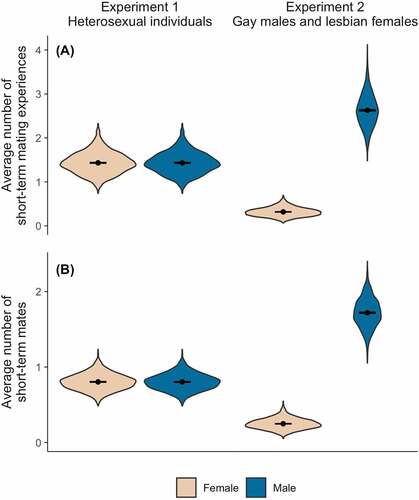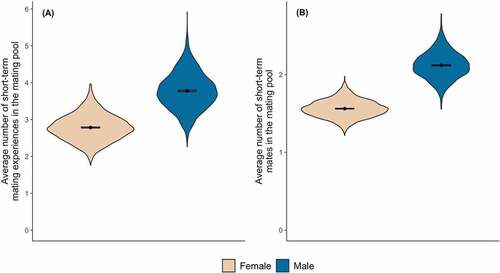Figures & data
Figure 1. Short-term mating behaviors of males and females after 1,000 time steps in the model when sex differences existed in mating preferences.

Figure 2. Short-term mating behaviors of heterosexual males and females in the mating pool after 1,000 time steps in the model when sex differences existed in mating preferences.

Figure 3. Short-term mating behaviors of heterosexual males and gay males after 1,000 time steps in the model when sex differences existed in mating preferences.

Table 1. Short-term mating behaviors of heterosexual males and females in the mating pool after 1,000 time steps in the model.
Table 2. Short-term mating behaviors of gay males and lesbian females after 1,000 time steps in the model.
